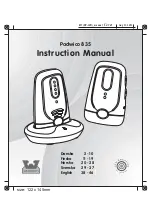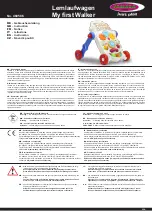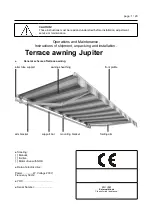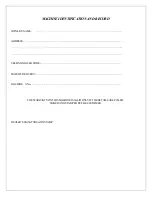
Gates Underwater Products, Inc
5111 Santa Fe Street, Suite H • San Diego, CA • 92109 • 858.272.2501 • 800.875.1052 • 858.272-1208
[email protected] • www.GatesHousings.com
3
07/29/04
•
Close the housing. See that the halves are
mated and aligned
properly. Close the
safety latches into their locked position.
•
Check the port
for proper installation (if it has been removed). The port should be
flush to the housing
and secured with the bayonet tabs on the inside (it should not
pull off when secured properly).
•
One final check
should be made to look for anything unusual. This could be a
pinched o-ring, damage from impact or drop, cracked window, etc.
During the Dive
When you enter the water and during the dive, some important tips to remember:
•
Detecting a leak
-- Contrary to popular belief, a leaking housing will
NOT
spew a
stream of bubbles to flag a leak. Water will be forced inside, but air will not escape.
Look inside the housing from any viewport as you carefully submerge the housing. A
good way to do this is hold the camera lens down as you look inside. If there is any
water whatsoever, it will pool at the lens, telling you to exit the water post haste.
•
Optional
Audio Moisture Detector Alarms
are available for most Gates housing
models.
If you hear the loud, annoying buzz it creates during your dive, immediately
exit the water and examine your housing.
•
Severe impacts
to rocks, coral or anything solid should naturally be avoided. Your
Gates housing is designed to withstand these incidents, but rough or abusive
handling could compromise the integrity of the seals. Should you encounter a heavy
impact or other extreme conditions, look immediately for leaks. It is highly
recommended you exit the water and thoroughly inspect your equipment after such
an event.
After the Dive
As you may know, salt water is highly corrosive when left in contact with metal. It can
quickly turn iron into rust, and aluminum into aluminum oxide. Even though your Gates
housing comes anodized and sealed for protection against salt water, even the best
protection can be compromised when left exposed to salt water for extended periods of
time. Indeed a deep scratch or dent can expose aluminum, making it susceptible to salt
water corrosion.
This is bad
.
Once again, some easy steps can prevent any problems due to corrosion.
•
When you are finished diving, completely
submerge or rinse your sealed housing
immediately in fresh water
. If you cannot do so directly, then as soon as possible
after the dive. Soaking your housing in fresh water is not necessary – a thorough
rinse will suffice.
•
If you submerge your housing in a dip tank, take care that other cameras and
equipment do not adversely contact the housing. Many floods have occurred due to
carelessness in the rinse tank.
•
If you open the housing to change batteries, tapes, film, etc. between dives,
thoroughly dry the housing before opening
. Use compressed air whenever
possible to blow away water from around the mating surfaces and avoid any drips







































